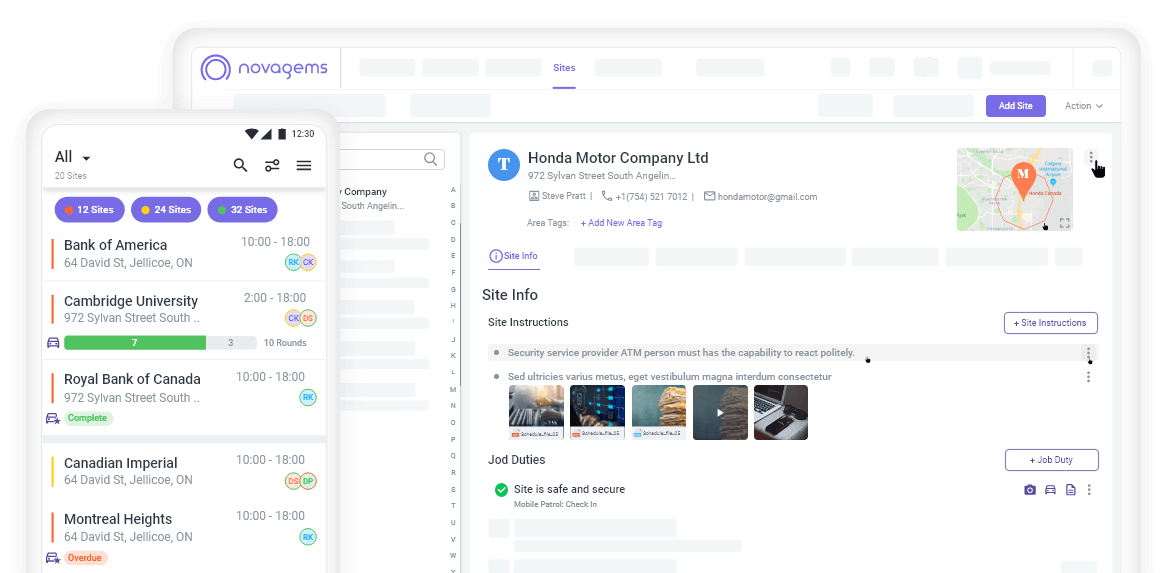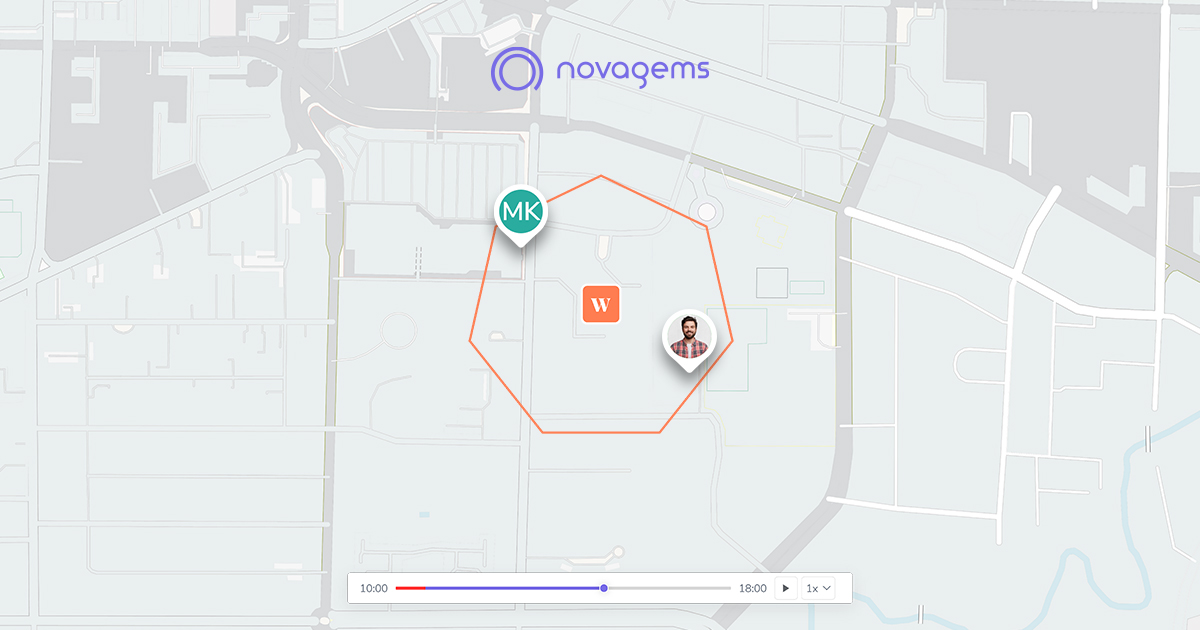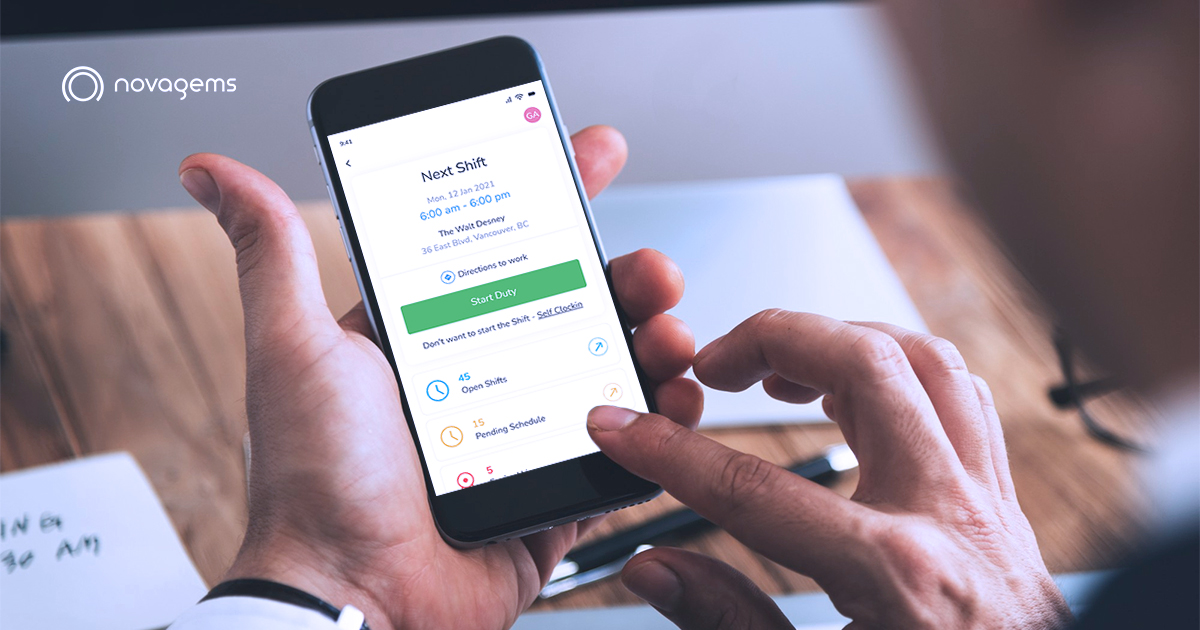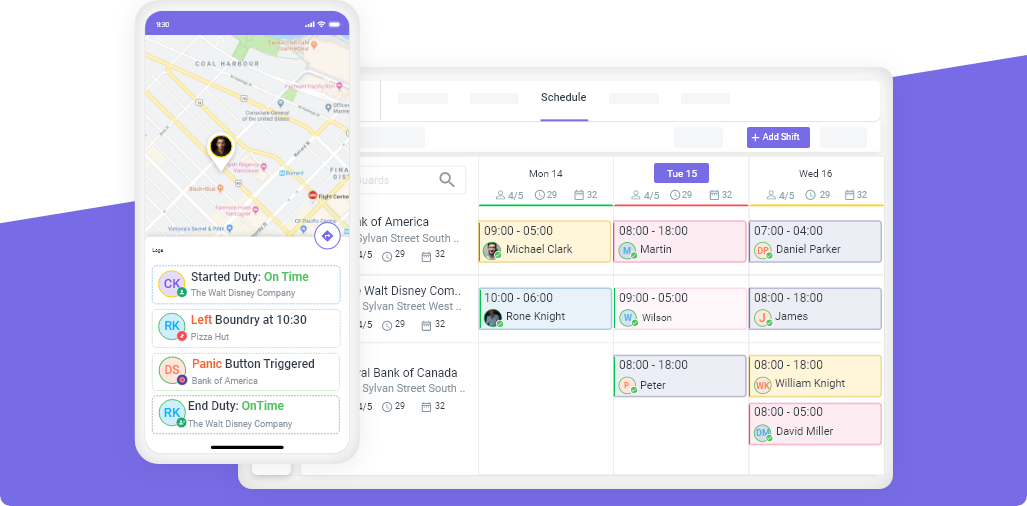10 Things Your Security Company Management Software Will Help You Learn
Published on: Tue, Feb 22, 2022
Read in 12 minutes
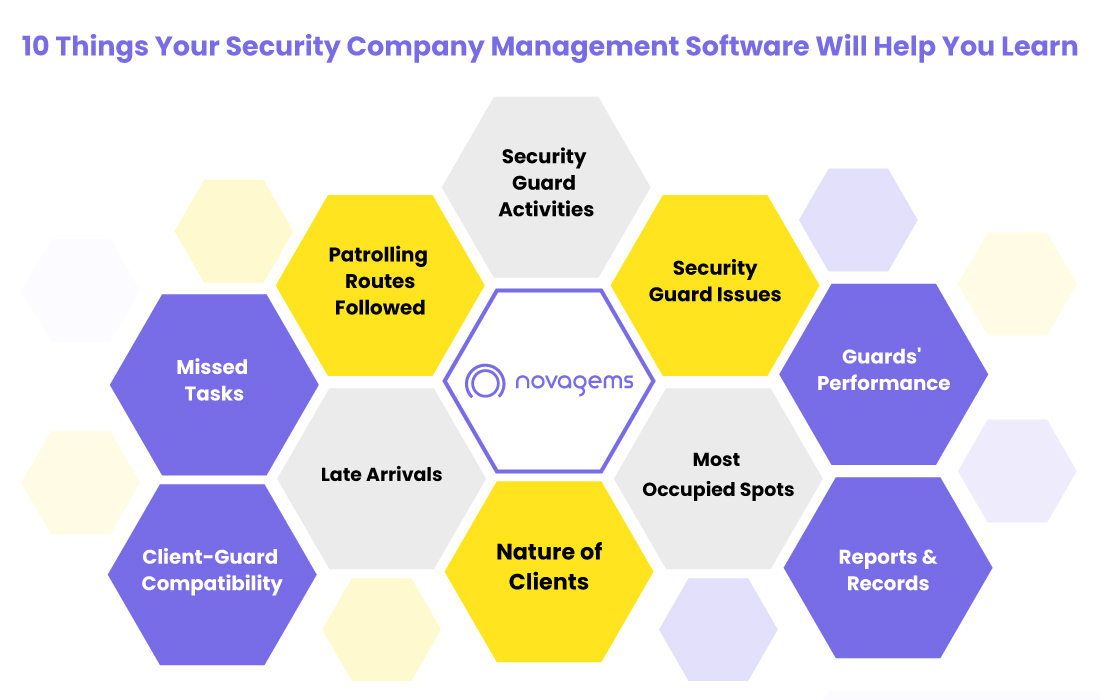
In today’s fast-paced world, security companies are expected to do more than just protect people and property. Clients want detailed reports, real-time updates, and proof that their site is safe, all the time.
Managing all of this manually? That’s not just stressful, it’s risky. Security companies that implement workforce management software reduce administrative time by an average of 25%.
That’s why many companies are turning to security company management software to take control of their operations, streamline guard performance, and make smarter decisions.
Key Takeaways
- Modern security software gives real-time visibility into your team and operations.
- You’ll learn which guards are performing, who’s missing tasks, and how to improve scheduling.
- These insights help reduce risks, increase client trust, and grow your business faster.
A management system can help security officers and guards work efficiently and get more done without hassle.
What Is Security Company Management Software?
Security company management software is a digital platform that helps you manage guard schedules, patrols, incident reports, and communication, all in one place.
Instead of using clipboards, spreadsheets, or WhatsApp groups, you use a cloud-based system to track and manage everything in real time.
And the best part? It gives you data-driven insights that can help you make better decisions every day.
One of the biggest advantages of using security company management software is how much you can learn about your business, in real time and over time.
Unlike traditional systems where information is scattered across paper logs, phone calls, or spreadsheets, digital platforms bring everything into one place. And with that centralization comes insight, the kind that helps you make smarter decisions.
Let us have a look at the ten things you can learn from a guard management system:
1) What are your security guards doing?
When you connect your security guards with security company management software, it gets easy to keep an eye on their activities. With such a system, you can track what your security guards spend their time doing when they are on the clock. So, from the time they log in to the time they log out, you can track their activities, movements, and tasks accomplished.
How fast do your guards respond when an alarm goes off? Are some responding quicker than others? Are there any consistent delays?
Management software gives you time-stamped logs of guard actions, including:
- When they received a dispatch or alert
- How long it took them to respond
- How long they stayed on-site after the response
This data helps identify:
- High-performing guards (for reward or promotion)
- Underperforming guards (who may need retraining)
- Sites with frequent delays (potential security gaps)
Understanding real response times also helps improve your SLAs (Service Level Agreements) and builds trust with clients who want measurable performance metrics.
It is possible because of features like log sheets, checkpoints, GPS tracking, tour reports, and geofencing offered by a guard management system.
2) What routes are your patrolling vehicles following?
Like security guards, you can connect your patrolling officers through the system. It helps you not only keep track of the patrolling officers but also of the vehicles.
Even the best-trained teams can make mistakes. But when you’re relying on paper logs or verbal updates, it’s hard to catch them before it’s too late.
Security software helps you:
- Track every scheduled patrol and checkpoint
- Get notified in real-time when a task is missed or skipped
- View patterns across shifts or sites
For example, if checkpoint #4 at a warehouse is skipped 3 days in a row, the software will flag it, allowing you to take action. This insight helps you:
- Maintain service consistency
- Reduce client complaints
- Avoid liability in case of incidents
So, whenever the vehicles start patrolling and check into the decided routes, the system notifies the control center or managers. The managers can also direct the patrolling staff to keep them on the correct routes. With GPS tracking and real-time communication, managing and keeping track of the patrolling vehicles have become easy.
3) What are the issues faced by the security guards?
With the incident reporting feature, a security guard management system allows guards to create reports about the emergencies they face.
Modern security company management software uses GPS to track where guards are during their shifts. Over time, this data creates a “heatmap” showing where guards spend the most and least time.
Why this matters:
- Ensures all areas of a site are properly covered
- Reveals if guards are spending too much time in non-critical zones
- Helps improve patrol routes and efficiency
Let’s say a guard always lingers near the front gate and rarely checks the back lot. With software insights, you can quickly spot this behavior and adjust patrol assignments or give clear instructions to correct the pattern.
It helps the managers know the risks and dangers that each job/property poses for the security guards. So, the managers can take safety actions to safeguard their teams by providing them with the required safety equipment. In emergencies, the guards can also push the panic button on their system that alerts the security managers and police.
4) Which tenants or residents create troubles for the guards?
Mostly, property owners avail of security services, but they don’t necessarily use the property in every case. In most cases, the security guards have to deal with tenants or residents of a property owned by someone else.
As you use the system, you’ll start to see what matters most to each client:
- Some may care about frequent reports
- Others prioritize fast response times
- Some may request extra attention to back entrances or lobbies
By tracking client-specific feedback and task history, your software helps you:
- Personalize services
- Strengthen relationships
- Upsell based on needs (e.g., suggesting more mobile patrols)
In such cases, a security guard management system will help the security company keep track of problematic tenants. If someone is creating problems for the guards during their shifts, they can notify the managers. It allows the managers to create reports and send them to the property owners. These reports can also act as evidence against the tenants and help the owners with the eviction process.
5) How is a security guard performing?
As we discussed in the first point, managers can supervise the activities of security guards. With a record of these activities, it gets easy for the managers to create a report for each security guard. They can make weekly or monthly reports and keep track of the guards’ performance. Based on their past performances, the system color-codes the guards on the system. It marks them in colors like red, yellow, and green, which makes it easily visible for the managers to track the guard’s performance.
Top software platforms offer color-coded dashboards that make it easy to assess performance at a glance.
For example:
- Green = consistent, on-time, excellent reporting
- Yellow = some missed patrols or late check-ins
- Red = frequent issues, needs immediate attention
These dashboards let you:
- Identify trends across weeks or months
- Group guards by performance levels
- Assign supervisors or training where needed
This is a key difference between reactive management and proactive leadership — and it all starts with learning from your software.
6) When security guards don’t report in time
Security company management software systems come with many features that help the managers keep track of schedules, time logs, shift timings, and whatnot.
Once the guards report on duty, they log in, and when they leave, they log out of the system. It helps notify the managers whether the guards have arrived or not. If a guard does not report in time, the system notifies the security manager.
Every incident matters, whether it’s a trespassing attempt, broken gate, or unauthorized vehicle.
Software lets guards report incidents directly from their phones with:
- Photos or videos
- Notes and dropdown tags (e.g., vandalism, suspicious activity)
- Time and location stamps
But the real power is what happens next: over time, these reports build a dataset. You can learn:
- Which types of incidents are most common
- Which sites are most prone to problems
- When (time of day/week) issues usually occur
Armed with this insight, you can proactively:
- Adjust guard deployment
- Recommend security upgrades to clients
- Demonstrate value with real data
The system also records the log data of each guard, and the managers can check the same anytime. It helps the managers at the time of payroll creation.
7) When the guards miss time-sensitive tasks
With the help of scheduling, managers can assign time-sensitive tasks to the guards. The system helps the managers set time intervals for job duties and tours for the guards. So, during each time interval, it notifies both the manager and the guard about the time left for the task they are performing. So, it keeps both the parties informed so that in the case of time-sensitive tasks nothing is skipped or missed.
Top software platforms offer color-coded dashboards that make it easy to assess performance at a glance.
For example:
- Green = consistent, on-time, excellent reporting
- Yellow = some missed patrols or late check-ins
- Red = frequent issues, needs immediate attention
These dashboards let you:
- Identify trends across weeks or months
- Group guards by performance levels
- Assign supervisors or training where needed
This is a key difference between reactive management and proactive leadership — and it all starts with learning from your software.
It helps the managers track when the guards have failed to perform well for time-sensitive tasks.
8) On which areas of the property do the guards spend most of their time?
With security company software, the managers can check where the guards spend most of their time. They can track whether the guards were at the entrance, checkpoints, or the back gate?
Reliable attendance is critical in the security business. If a guard is late or misses a shift, your company, and your client, is exposed to risk.
With security software, you’ll learn:
- Who clocked in late and how often
- Whether shifts were properly handed off
- If there were any unattended gaps between guards
Many systems use geo-fencing to ensure guards only check in when physically present at the site, eliminating “buddy punching” or dishonest check-ins.
This gives you:
- Accurate timesheets
- Payroll confidence
- Greater scheduling transparency
If you find them at spots where they are not allowed or required, you can interrogate about the same.
9) The best and the worst guards for a client
Security companies keep shuffling the guards’ shifts for many reasons like availability, security, and privacy.
Finally, and perhaps most importantly, software helps you learn what actually works in your operations.
You’ll discover:
- Which sites run smoothly and why
- What patrol routines reduce incidents
- What guard teams have the best client feedback
This lets you replicate your best practices across more sites and scale faster, with less guesswork.
Even for regular clients, it is common for security companies to send different security guards after a period. In such cases, the security company must maintain its reputation and the quality of services. The managers can track each guard’s performance and see the best and worst guards for the client. Based on this data, the managers can alter schedules and duties and keep the best ones for the said client.
10) Creation of Reports for Each Client and Site
With security company software, you can create reports of different types including Activity, Maintenance, and Incident reports from the available templates. If you want a new one, you can make a customized report too as per your requirements. These reports help the security guards and managers work collaboratively and gather the information and issues faced during a job. It helps the managers learn about the problems faced by the guards on site.
These reports help the managers keep track of the clients or jobs assigned to the guards. It also keeps track of a guard’s performance for that client or job.
Based on this information, the managers can check which guards faced the most problems on-site? What were the reasons behind it? Was there a lack of security equipment? Is the problem related to the guard or the site? The managers can take all this information and create reports, which help them analyze the clients and create a better security plan for the future.
The answers to these questions help with better management, performance analysis, and scheduling in the future.
Benefits of Security Company Management Software
If you’re still wondering whether investing in security company management software is worth it, the answer is yes. Beyond just daily task management, this type of software offers long-term business value that manual systems can’t match.
Here are some of the top benefits:
1. Increases Operational Efficiency
Security software automates many of your day-to-day tasks like scheduling, reporting, timesheets, and attendance tracking. This reduces the time spent on paperwork and phone calls, allowing your team to focus on what matters most — protecting people and property.
Example: A scheduling change that would take 15–20 minutes manually can be done in seconds with drag-and-drop tools.
2. Improves Guard Accountability
With real-time GPS tracking, time-stamped check-ins, and digital activity logs, you always know:
- Who is on duty
- Where they are
- What tasks they’ve completed
This helps reduce no-shows, missed patrols, and false reporting. Guard performance becomes measurable and transparent.
3. Enhances Client Satisfaction
Clients want proof that their property is being protected. Security management platforms allow you to:
- Share real-time updates
- Deliver branded incident reports
- Provide access to a client portal (in some software)
This transparency builds trust and shows that your company is proactive and professional. The Temkin Group found that companies that earn $1 billion annually can expect to earn, on average, an additional $700 million within 3 years of investing in customer experience.
4. Reduces Compliance Risks
Many industries (especially healthcare, cannabis, and financial services) have strict regulations around security operations.
Software helps by:
- Storing incident logs and training records
- Generating audit-ready reports
- Ensuring shifts are never left uncovered
Having a digital trail makes it easier to pass inspections and handle insurance or legal claims.
5. Cuts Costs Over Time
While there’s a cost to implementing software, the savings often outweigh it. You reduce:
- Overtime payments from poor scheduling
- Manual errors in payroll or reporting
- Risk of client loss from performance gaps
Most companies also report higher staff productivity and reduced admin hours — allowing them to grow without hiring more managers.
6. Scales With Your Business
Whether you manage 5 guards or 500, security company management software grows with you. You can:
- Add more users and sites as needed
- Customize features by role (guard, supervisor, admin)
- Get analytics to plan for expansion
This makes software a long-term investment in your company’s success.
So, these were the ten awesome things you can learn from a security company management software. If you are looking for an efficient guard management system, contact Novagems. We offer all these features and more!
Get a Free Trial
Sign up For Newsletter
Latest Blog Posts
Get Started
Start being productive & grow your business
with Novagems
